Mezcal used to be moved at night. Before mezcaleros (mezcal distillers) left on sales trips, bottles were unearthed from hiding places outside their homes, with red soil and time gently taming the flavors of wild agave. They set out on mules and horses and by foot, coming from rural towns to Morelia, Michoacán’s capital city, shielded from government soldiers by the forests that blanket the mountains.
Mezcal is a centuries-old spirit made throughout Mexico that has been outlawed or repressed at different points in history, the exact reasons and tales of survival varying per region and family. In the western state of Michoacán during post-revolution clashes of the 1920s, modern mezcalero Emilio Vieyra’s great-grandfather held high ranks in an anti-government brigade, making mezcal—an economic resource in the community—a target as well. In the 1950s, Vieyra’s grandfather and other mezcaleros retreated from their vinatas, or distilleries, further into the mountains to escape the government’s prohibitive taxes and heavy hand of enforcement that left their facilities in shambles. Once, his grandfather and uncles rallied trying to chase after the soldiers they knew would destroy the most expensive equipment on the property—the hand-hammered copper stills. Many families stopped producing. But Vieyra’s continued, and today, he is a sixth generation mezcalero.
Vieyra’s brand, Don Mateo Mezcal, is named for his great-grandfather. Even fifteen years ago, Michoacán mezcal was mostly sourced from wild agaves, passed around in recycled bottles, and made for local consumption. But today, mezcal is trending so rapidly that large liquor companies are swooping up brands, and capitalizing on a consumption growth rate of almost thirty-two percent in 2018 according to IWSR Drinks Market Analysis, outpacing any other spirit. While families like the Vieyras economically benefit from the mezcal boom, it also puts pressure on agave, the spirit’s primary material which takes years to grow before it’s ready to harvest.
In 2000, Vieyra and his late father, Don José Emilio Vieyra Rangel, began planting agave on a four hundred-acre ranch with the goal to one day become agave self-sufficient, and only produce limited bottlings of wild agave. By doing so, the remaining Vieyra family has found themselves as the modern day guardians of not just a family legacy, but of an environmental and cultural ecosystem.
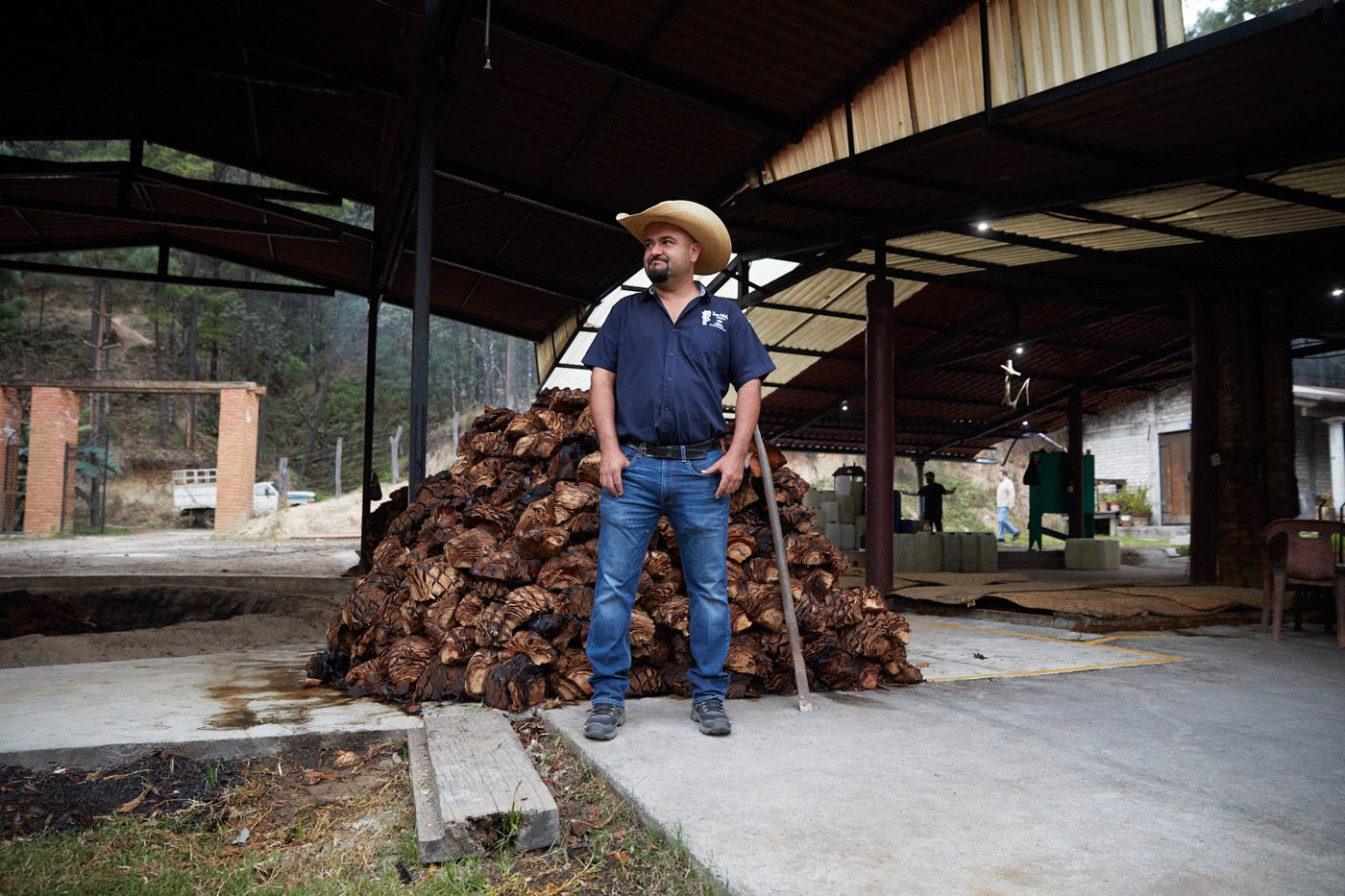
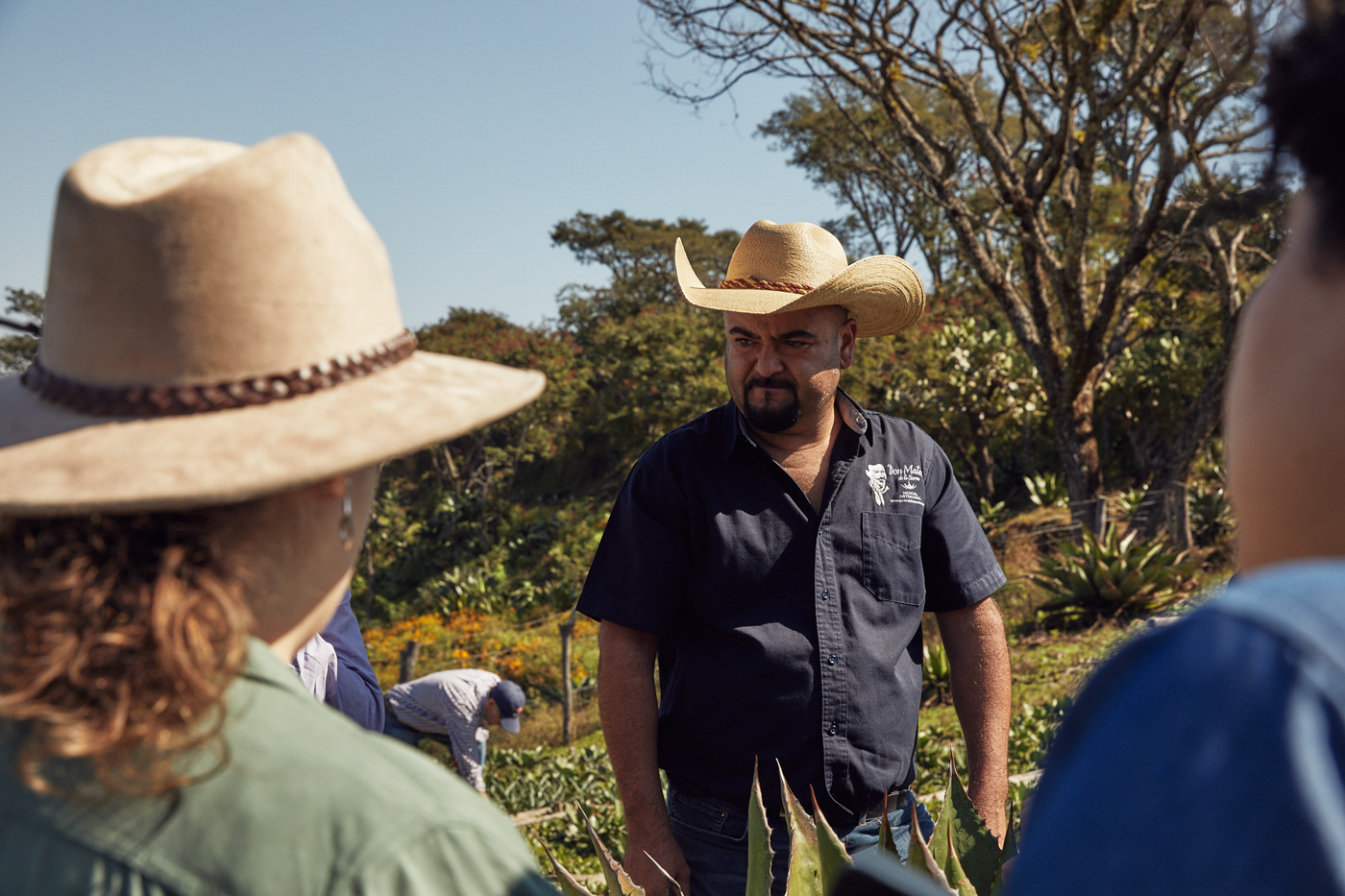
___
Agave, also called maguey, is native to the Americas, and when made into mezcal graces us with the taste of the earth, trees, springs and rocks of Mexico’s deserts and forests. The spirit is made when the sugar content in the plant reaches its highest potential and the succulent leaves are macheted off, revealing the heart of the agave. It’s then cooked in an underground oven, crushed, fermented and distilled.
Distillers all over Mexico make mezcal with various types of agave, but according to its Denomination of Origin, it can only legally be produced and labeled mezcal in nine states. About ninety percent of what we see in the U.S. is from the southern state of Oaxaca. With more infrastructure and investment appearing in other regions, however, that footprint has begun to expand, but Don Mateo is still the only Michoacán-owned brand exporting, which they began in 2015.
Don Mateo’s roster boasts the agave darling of Michoacán cupreata, a broad-leafed agave with copper colored spines, nicknamed chino, or “curly” for its leaves with crimp-like imprints. They also bottle wild agave like the inaequidens, which translates to “uneven teeth,” it’s gangly leaves curling out and crawling back to earth armored by irregular spines. When an agave is harvested, the entire plant is killed, typically when it’s no younger than seven years old. The waiting period for more agave wasn’t a problem in Vieyra’s grandfather’s time, when the demand for mezcal didn’t outpace nature’s supply.
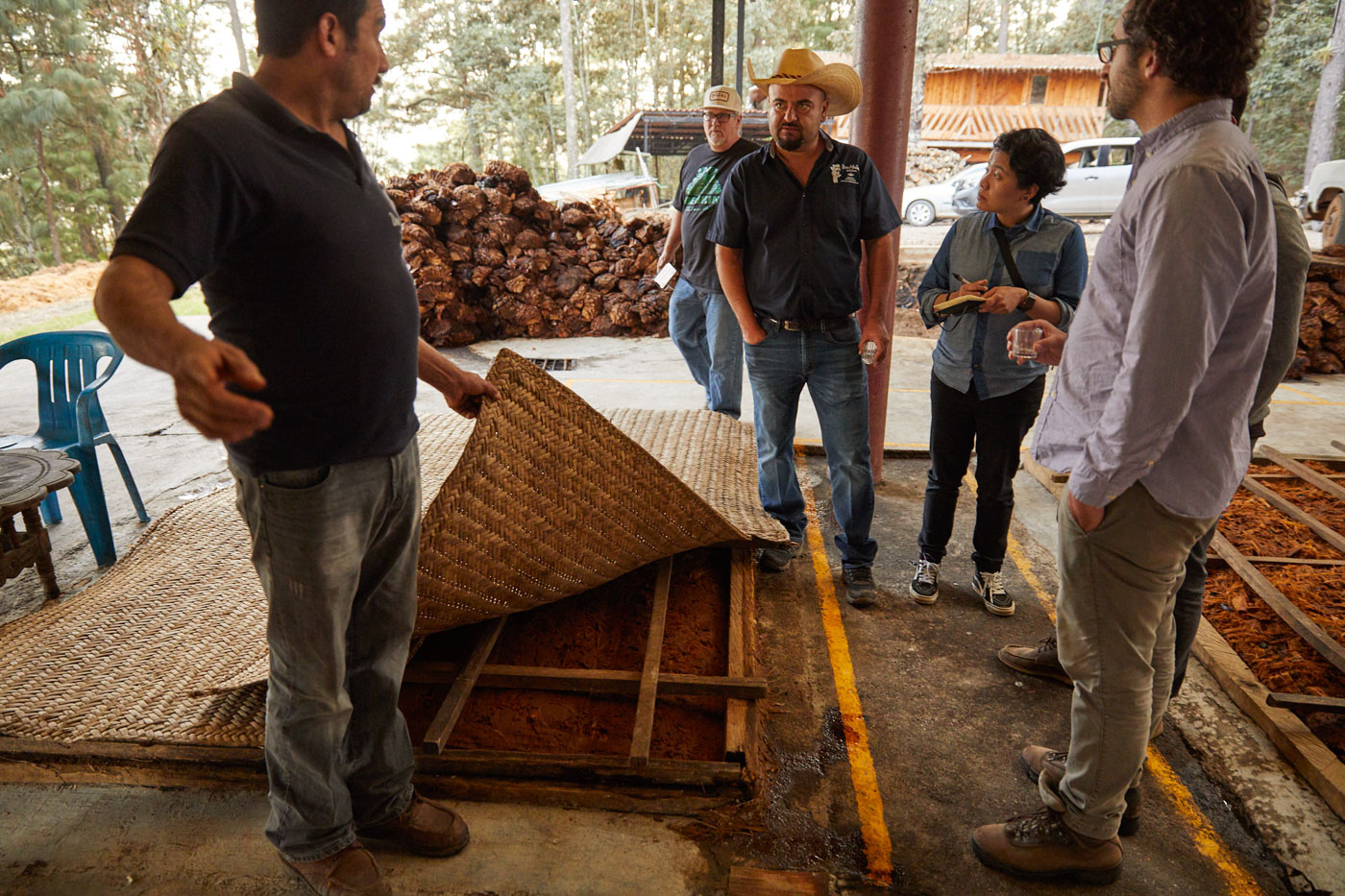
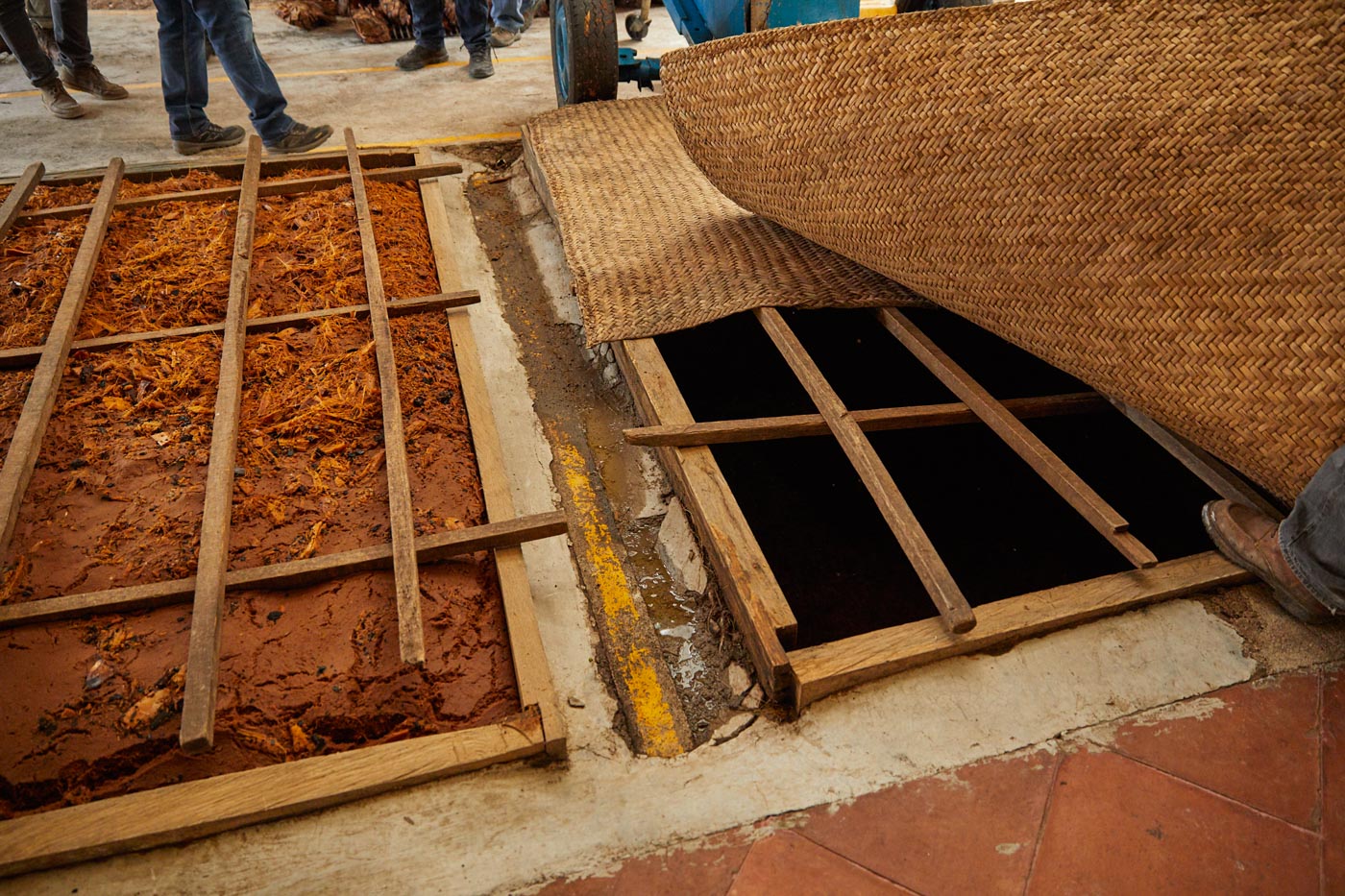

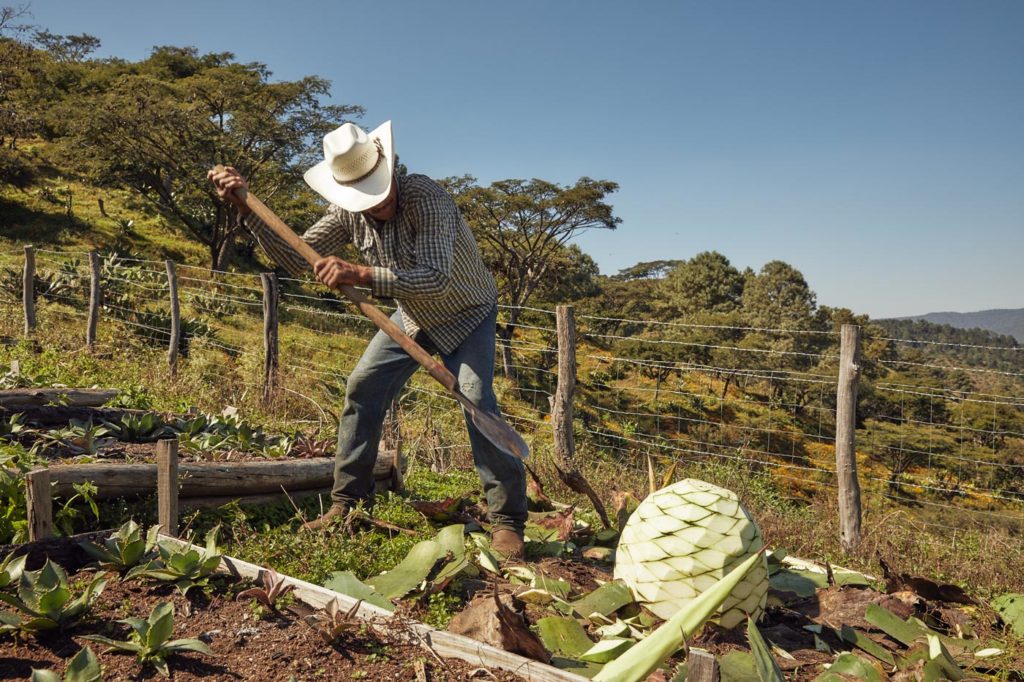

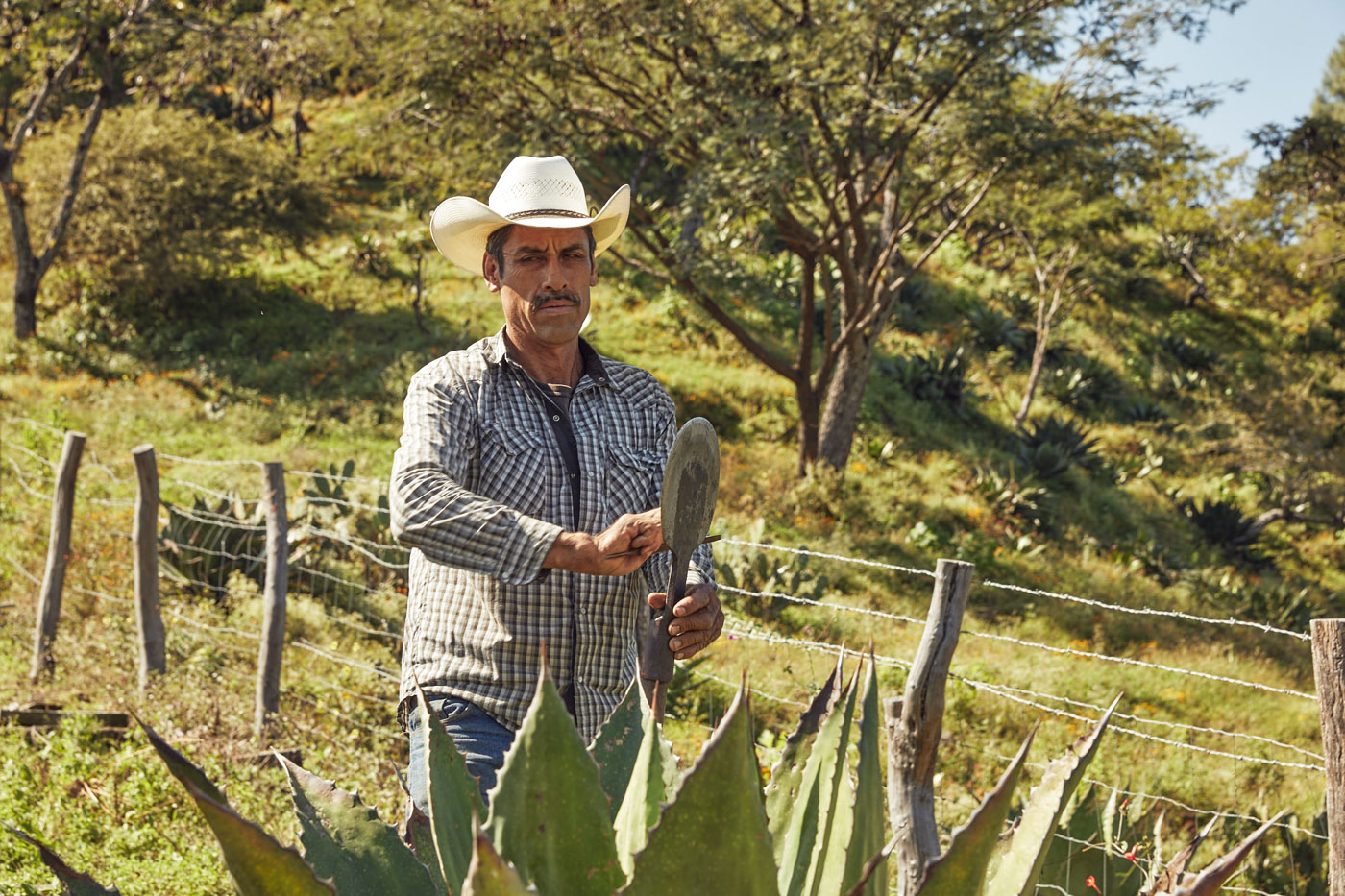
“After the 1960s and seventies there weren’t any issues with the law, but the level of mezcal production dropped,” says Vieyra. “People started exploiting the wild agaves, cutting more than they were planting.” His comments point to the mezcal category’s existential growing pain: how to sustainably grow the spirit without pillaging the wild agave supply, or engaging in destructive farming practices like monocropping, which lessen agave’s genetic diversity leaving them exposed to plagues and diseases.
For the Vieyras, the solution lies in Rancho Limón, an ecotone—a place of transition—where the flora and fauna of pine-oak forests and dry tropical jungle meet. Vieyra used to hike from Morelia to bring his father his weekly food supply while he worked at the vinata on this ridge. They later moved the vinata to Pino Bonito where water was more accessible, but they kept the ranch, which has now been in the family for four generations.
Today, Vieyra is forty years old with children of his own, and is usually found in jeans, a company-branded button-up shirt, and a straw sombrero. His father, a revered figure in the mezcal world, passed away in 2018 and Vieyra has followed in his footsteps representing Michoacán’s mezcal sector on a national level. But he’s most at home wandering through the electric green grass that lights up the entrance to the ranch.
He plants about ten thousand agave cupreata per year, using no pesticides, and cows graze to keep the grounds in check. A portion of the ranch functions as a nature reserve protected by the state in which no humans, not even Vieyra, enter. But there’s still plenty of activity, particularly at night.
The word mezcal is often translated from its Náhuatl roots, mexcalli, as oven-cooked agave. But a closer look at the original language reveals a more poetic definition: “agave in the house of the moon.” “Maguey has its life at night,” says Vieyra. The pores of agaves open under the night sky, allowing them to retain more water than if they were to open under the hot sun. They also flower at night, their long stalks piercing the sky and feeding bats who cross pollinate, creating generations of stronger agaves.
But for tequila or mezcal production, agave is typically harvested before it flowers, which has raised ecological issues. The industrialization of tequila has resulted in the loss of an important food source for certain bat species dependent on those flowers, which have been on Mexico’s endangered list since 1994. Vieyra is part of a cohort of tequila and mezcal producers working with the Tequila Interchange Project to leave five percent of their agaves to flower, and his agaves feed three species of bats biologists have found in the ranch caves.
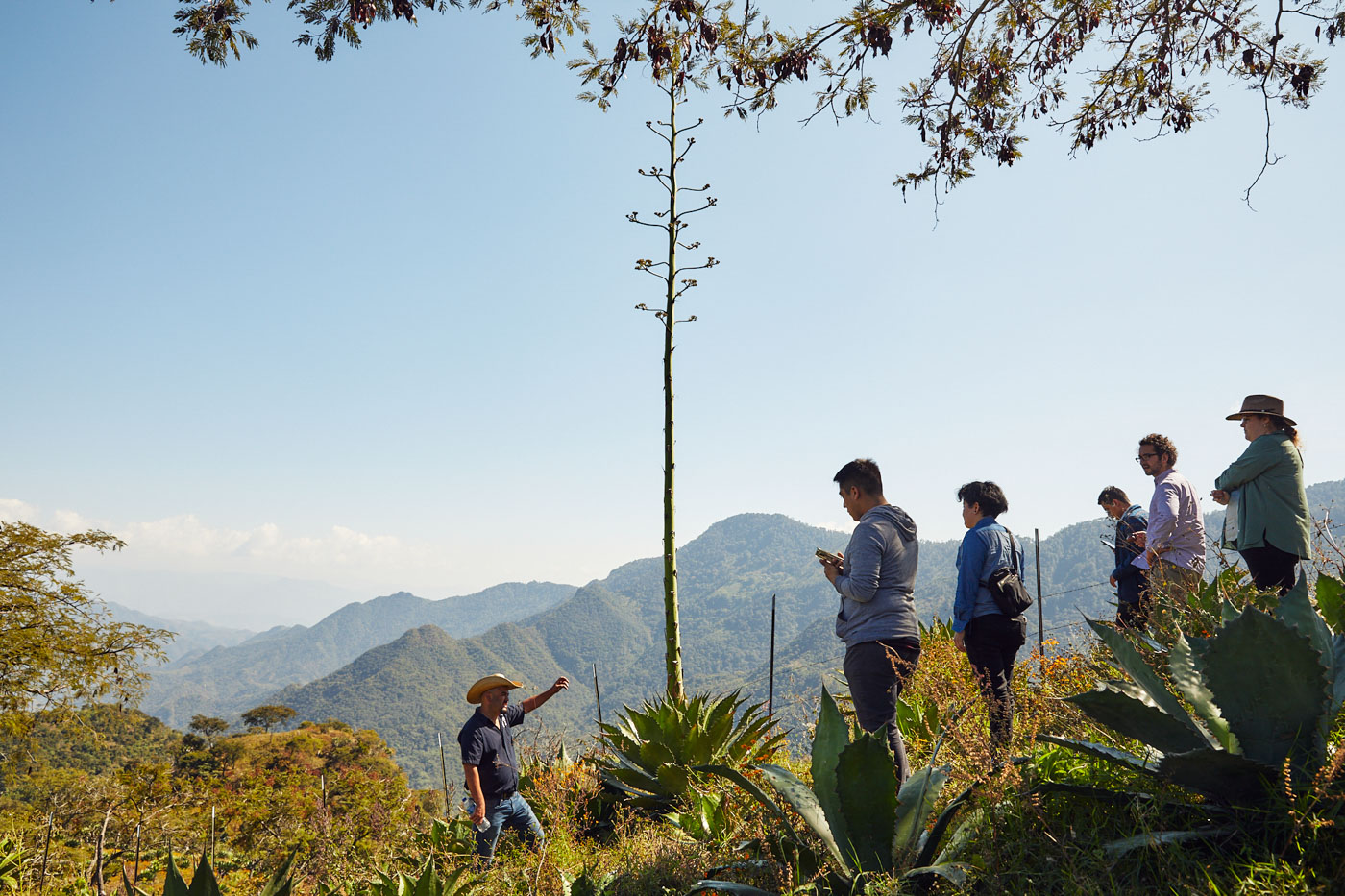
In the dawn, the sound of bats gives way to a chorus of up to 154 species of resident and migratory birds found here, according to a recent study by biologist Laura Villaseñor Gómez from Michoacán University of Saint Nicholas of Hidalgo—providing a rich area of research. “From the perspective of species conservation through proper administration of the ranch and its plants in good health, this ranch is an ideal site for experimentation and observing birds behavior,” says Gómez. Her team is at the ranch when I visit, tracking agave pollinators like bright blue indigo buntings that make their journey south at night using the stars as guides. Among others on the list of Mexico’s native species at risk, they encounter the buzz of the sparkling tailed hummingbird and a white-tail hawk hanging in the wind.
And it’s not just the animals that play a part in the health of the ranch. On our way out, we rattle in Vieyra’s pickup truck through the pine trees. “Pines help us conserve water, they create a humid area, and then we have enough water for animals and the nursery,” he says as he points to a grove of trees they recently planted.
To the east of Rancho Limón, the forests of Michoacán receive millions of monarch butterflies every year making up one of the largest migration events in the world. But those same forests are under threat from avocado orchards (Michoacán supplies eighty to ninety percent of U.S avocados) and illegal lodging. The growing demand for avocados has led to alarming deforestation in the state, with about 14,800 to 19,800 acres of deforestation occuring per year according to Talía Coria, the state delegate of the Federal Environmental Protection Agency, putting monarchs, other animals, and their advocates at risk. In February, two environmental activists connected to the monarch sanctuaries who fought against illegal lodging were found dead the same week. With the absence of comprehensive and enforced regulations to prevent deforestation, the weight of protecting the state’s forests often falls on personal and community stewardship.
For Vieyra, planting agave and pine is part of a vital holistic outlook in a time when vinatas and brands are quickly sprouting up, hoping to make a quick buck off the budding mezcal industry. “We always want to be thinking carefully and long-term about what we want to be seeing in ten to twenty years,” he says.
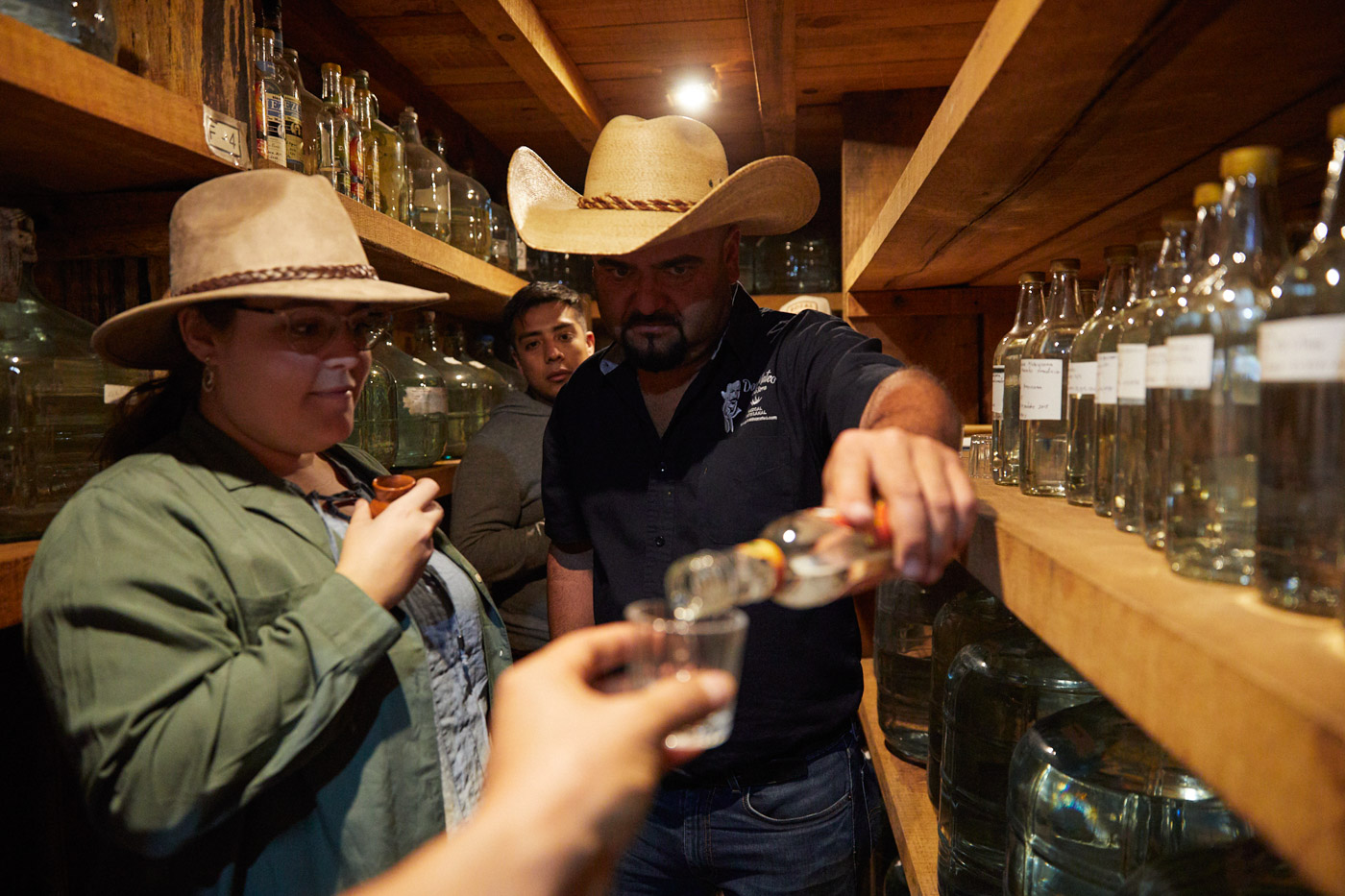
——
Like many families in Michoacán, time has been divided for the Vieyras by journeys to the U.S. Michoacán has historically been one of the states with the highest flow of emigration in Mexico, the pull of agricultural work bringing people over the border since the early twentieth century. At vinatas, it’s common that workers have spent years or seasons in the U.S., a trend true of Vieyra’s own family.
Vieyra’s mother, Delia Vargas Vieyra, is the daughter of farmers and the granddaughter of a mezcalero. She married her husband in high school, and the young couple built their mezcal business together. But before Emilio Vieyra was born, his parents struggled to survive off mezcal sales and moved to Texas for several years “looking for the American dream,” Delia says. Her eyes well when she recalls the memories from that time: of feeling alone, of struggling to find work while pregnant, of not having a bed to sleep on when her son was born. When Vieyra was school-age, they decided to move home and push the mezcal business forward. “We did suffer a lot in the U.S., but we also learned and matured,” she says. “Through that suffering we realized what we have here.”
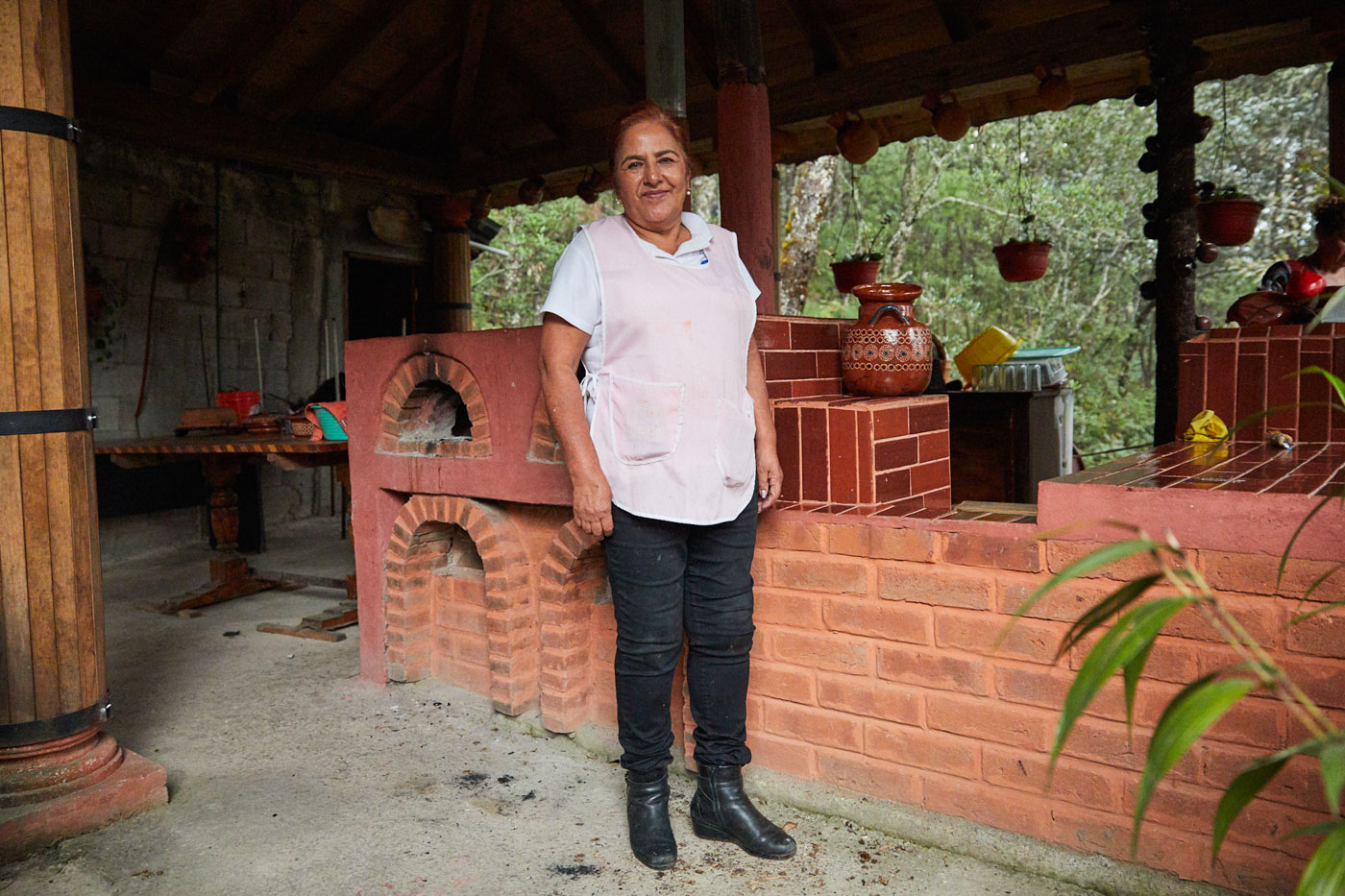
Vieyra’s journey north in his twenties was a turning point for him as well, when he hoped to continue his veterinary studies only to find his previous credentials didn’t count in the U.S. academic system. He came home less than a year later, and like his parents, he went all in on the family business, helping his father formalize and eventually export the brand.
Today, Vieyra, his wife and mother run the company together, employing fifteen people and doubling that number in peak production season. They offer benefits for their staff in part to retain workers who previously worked seasonally in the U.S., illustrating the potential of the growing mezcal industry to create jobs in places where there once weren’t. Delia is also the president of the three-year-old Women’s Association of Mezcal Producers in Michoacán, mentoring other women and creating professional development opportunities for an often hidden demographic in the business.
Delia’s status as the matriarch of Michoacán’s mezcal community is also apparent in her role as a keeper of Michoacán’s food traditions: one of her passions is cooking ancestral recipes for the stream of visitors at the vinata.
For the family, the grief of losing their husband and father is still palpable, noticeable in the tightening of their voices in our conversations about him. But this is a family grounded by their memories, hard work and legacy—a family who lives by a plant that requires perseverance and preservation.





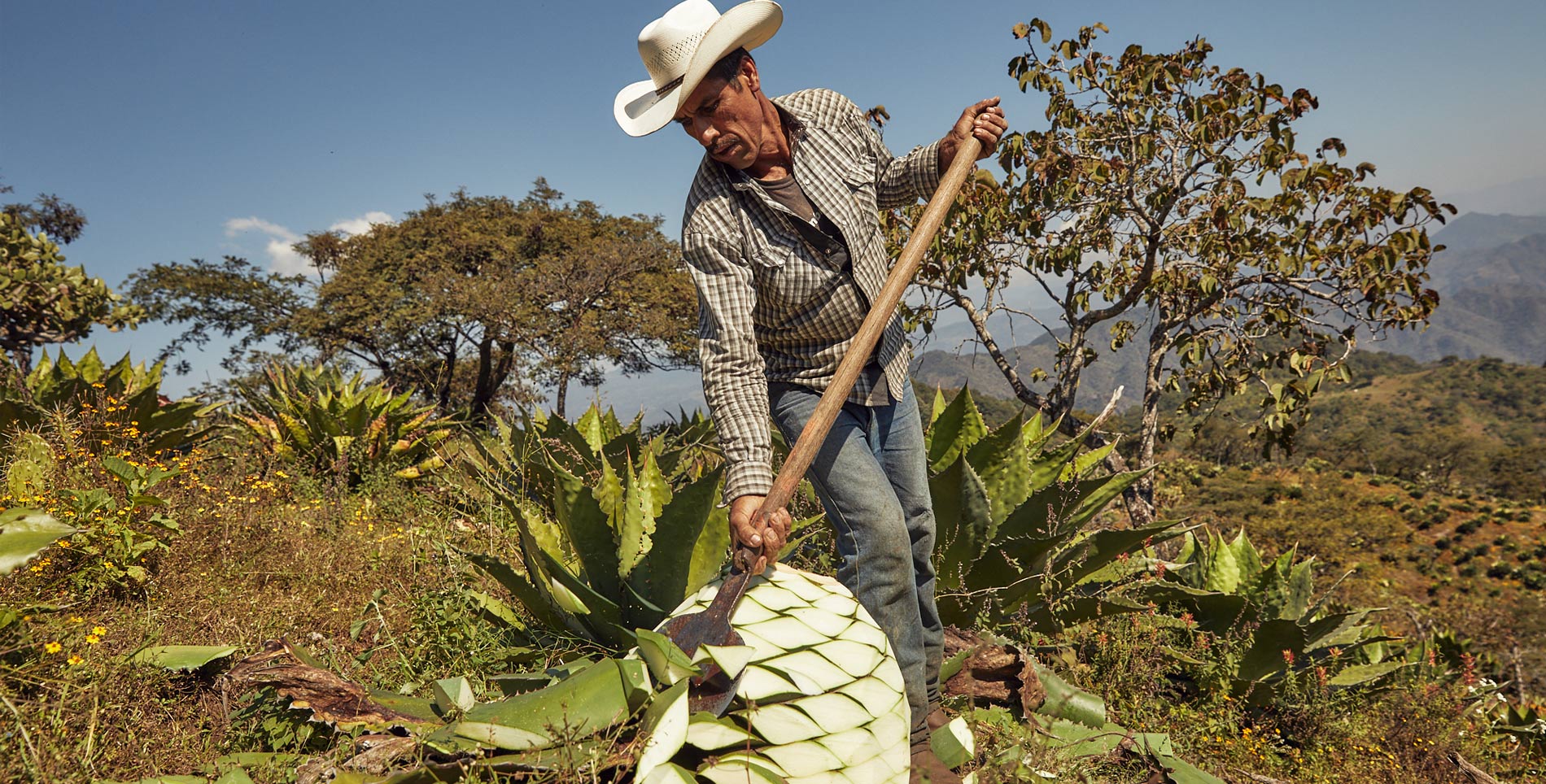

Our comments section is for members only.
Join today to gain exclusive access.